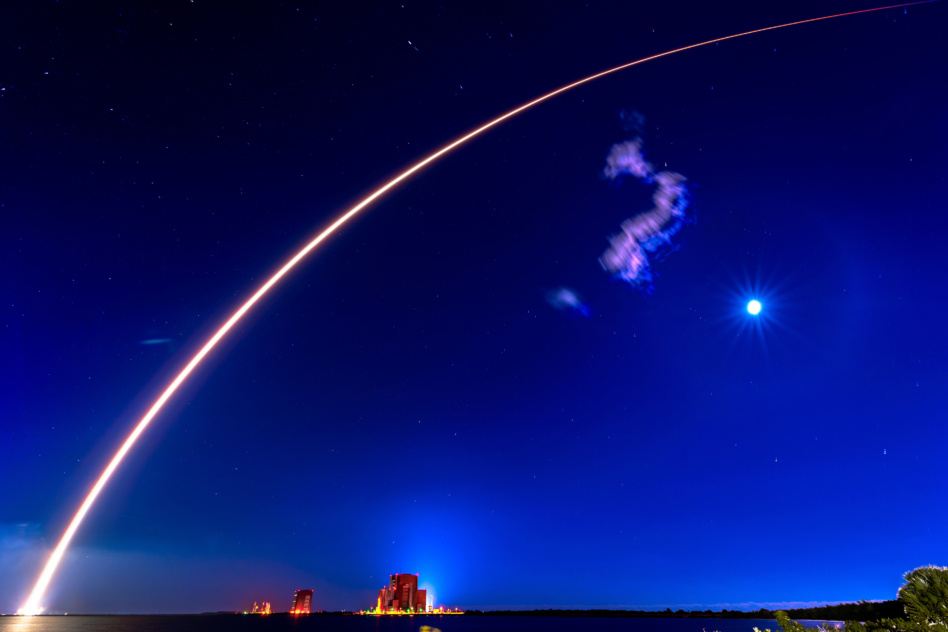The state of the space launch industry is about much more than just rockets.
Rocket Lab is America’s second-busiest launcher (after SpaceX), sending 10 missions to space in 2023, and serving as a ride to space for government agencies, including NASA and the National Reconnaissance Office. Despite that, the company earned more from its satellite sales than its launch business in 2023 and 2022, and formally announced its line of spacecraft-for-sale in February,
“If you’re endowed with the keys to space, you can choose to launch everybody else’s satellites, or you can launch your own,” Peter Beck, the CEO of Rocket Lab, told Payload. “My prediction is the large space companies of the future are not going to be a launch company or a satellite company. They’re going to be companies that use those tools to deploy infrastructure and provide services to the customer.”
Three makes a trend: Blue Origin, which rolled its New Glenn rocket out to the pad for the first time in February, is building products across several sectors of the space industry from sub-orbital space tourism flights to a commercial space station to a lunar lander. SpaceX, which did not return a request for comment, similarly is building its Starlink constellation and expanding internet access across the world while also charging ahead with its launch business from Falcon 9 to Starship.
Others, however, remain laser focused on launch. Relativity Space, which uses 3D printing to build its rockets, does sell some printing services, including under a contract with the US government. But CEO Tim Ellis told Payload that the company’s 3D printing capabilities allow Relativity to quickly iterate on rocket designs and contribute to the company’s launch goals rather than being a separate entity.
Though Ellis acknowledged that many in the launch industry are pursuing other revenue streams, “I don’t think that’s happening because there’s not a large opportunity in launch.”
Tory Bruno, CEO of ULA, also said his company will remain focused on improving its new Vulcan rocket rather than diversifying into new areas of the space industry.
“For now, we’re focused on our rocket enabling other people’s payloads, not competing with our customers,” he told Payload.
If ULA began building sats or offering services, it’d not only be competing with its customers, but also with its parents. The company is a joint venture between Boeing and Lockheed Martin, which both have large spacecraft portfolios of their own. Some space executives speculated the door could be opened for ULA to branch out once its proposed sale to new owners is complete.
Looking For a Ride
Multiple executives who spoke with Payload highlighted 2024 as a make or break year for rockets that have long been under development to actually make it to the pad, or not. More than a dozen new vehicles could make their maiden flight this year, with some, including ULA’s Vulcan and Chinese startup Orienspace’s Gravity-1, already debuting.
Even with new entrants, the officials who spoke to Payload unanimously agreed that supply is the biggest challenge facing the launch industry, because the rocket fleet of today can’t keep pace with the demand to get to orbit.
“We expect to see established and emerging launch service providers bring a significant supply to the market with an increase in launch options in response to customer demand,” a Blue Origin spokesperson told Payload in a statement. “Also, our customers have become accustomed to high reliability, so we will see companies be very intentional about ensuring mission success through rigorous qualification and testing.”
Mike French, VP for space systems at the Aerospace Industries Association, predicted that mega constellations will become a “kingmaker” for launch since they drive so much demand.
“There’s a symbiotic relationship between the success of mega constellations and the overall launch market because the replenishment of constellations drives so much launch demand,” he said.
There’s also a focus on responsive launch to be able to quickly launch new satellites (or reconstitute those that an adversary targeted) during a conflict. It’s a top priority for the DoD, which sponsored the Victus Nox mission last year that saw Firefly launch on short notice.
“Firefly is ramping up production of Alpha and our medium launch vehicle to meet the growing demand,” Firefly CEO Bill Weber said in a statement. “In fact, we just recently doubled the size of our manufacturing facilities, added two new test stands, and installed automated machinery that allows us to produce all the large carbon composite structures for Alpha in seven days and MLV in 30 days. This facility expansion at our Rocket Ranch in Briggs, Texas, was rapidly completed in just a year’s time to meet the responsive needs of our government and commercial customers.”
Going heavy? Execs are split on who will win the battle of heavy versus light launchers. Bruno and Ellis—both of whom are building medium-to-heavy or heavy-lift rockets at their companies—contend that larger launchers are the way of the future. Bruno predicted that the market has room for one or two small launcher, with larger launch vehicles better filling the market for missions ranging from spectacular national security assets to large numbers of small sats needed for constellations.
“I used to think two or three, but now I really think or one two,” Bruno said. “And they are all trying to move upmarket where there’s more missions available and unfortunately they’re doing it at a time when investment is getting a lot harder to come by.”
Beck, however, argued that the space industry still needs a dedicated small launch vehicle, and held up Electron as proof. The small launcher rocket is expected to launch 50+ times this year, doubling the launch cadence from the year before.
“I often see comments that there’s no need for a dedicated small launch vehicle, because rideshare does it all,” Beck said. “But we had our biggest year yet both in sales and in launch last year and this year sequentially so it’s really proven the utility of that product.”
French agreed that there will also be a business case for small launchers, especially for demo missions, and argued that Rocket Lab model has “figured it out” after a period of instability in the small launch market.
Shallow Pockets
Gone are the days of aspirational launch companies with sloppy business plans raking in large funding rounds. Now, even successful airtight companies are struggling to fundraise.
“The SPAC bubble burst,” Bruno said. “That’s had a chilling effect on that community. So perfectly good launch vehicles that could be developed and go serve the market that is there are having difficulty getting capitalized.”
Industry leaders also predicted consolidation within launch, including companies making strategic partnerships to leverage each other’s strong suits.
“Either you’re successful and you’re good at it and you can scale, or you’re not,” Beck said. “I think there will be a continuation of the winnowing of the industry.”
Regulatory Concerns
The industry execs also highlighted multiple regulatory areas that they’re watching closely in 2024:
- Orbital debris: Bruno said efforts to limit debris and boost tracking capabilities in orbit are top of mind for him, since more congestion in space could lead to fewer and shorter windows to launch. “You hear about the Kessler Syndrome,” he said. “That’s not as science fiction as it used to be as constellations get denser and denser.”
- Launch licensing: Ellis said he’s watching how the federal launch licensing process can keep pace as the cadence and number of launches each year keeps rising, and new players keep coming onto the scene.
- National security: Beck said he’s closely watching the upcoming onramp for the national security space launch program.
- Ranges: French said he’s keeping an eye on congestion at launch ranges, and whether the government will need to establish more spaceports, or turn to lesser-used launch sites like Wallops or Kodiak to absorb the growth in launch.
- $$: A Blue spokesperson called out Congress, and urged the government to be “intentional in their support of the space industry” with “reliable and predictable funding.”
The Final Word
We asked each of the leaders we spoke with to describe the state of the space launch industry in a couple words or a short phrase. Here’s what each of them said:
“It is strong. The country is in such a better place than it was before. There were a number of years where ULA was the only provider. Now there are multiple providers. So we have a broader industrial base exactly at the time that our nation is facing big challenges from Russia and especially China,” Bruno said.
“The state of the space launch industry is no longer about fluff, it’s all about execution,” Beck said.
“The state of the space launch industry needs competition,” Ellis said.
This story was updated to add a comment from Firefly.




